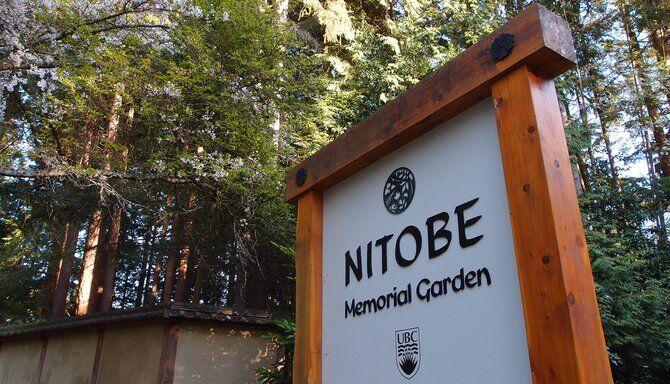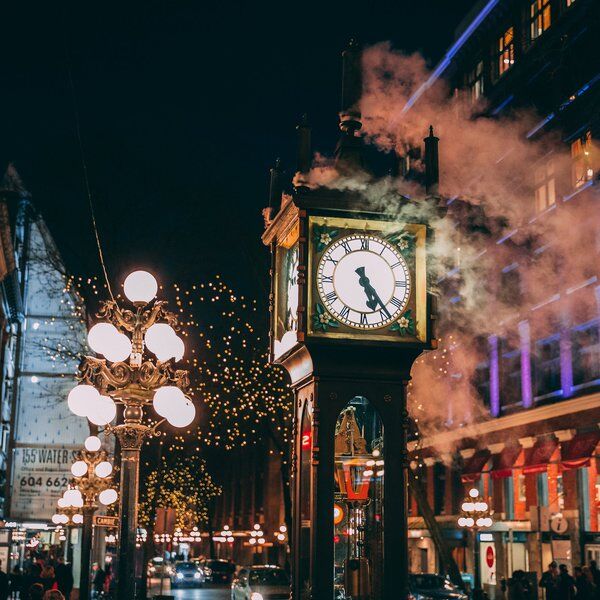Discover Japan in Vancouver: The Nitobe Memorial Garden
The Nitobe Memorial Garden is an authentic Japanese garden established in honor of Dr. Inazō Nitobe, a Japanese scholar, diplomat, and philosopher, who sought to build bridges of understanding between Japan and the Western world.
“Apostle of goodwill to the nations.”
The work of Dr. Nitobe played a crucial role in promoting Japanese culture during a time when Japan was considered largely unfamiliar to many Westerners. Dr. Nitobe’s aspiration "to become a bridge across the Pacific" is in the very essence of this garden. The garden was envisioned as a space where the values of cultural exchange and understanding could flourish. Today, visitors can reflect on commitment to promoting his culture to the Western world, by strolling through the Nitobe Memorial Garden.
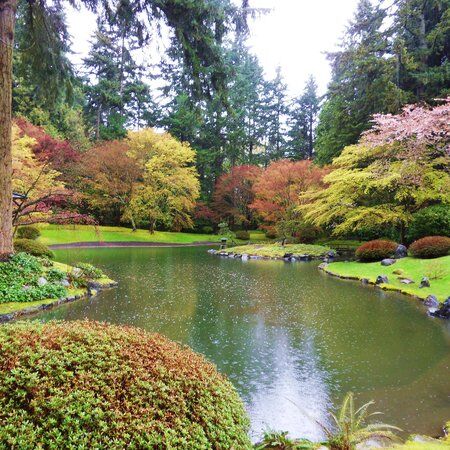
Creating the Nitobe Memorial Garden
Tragically, Dr. Nitobe passed away in Victoria, British Columbia, in 1933, while on his way back to Japan after attending a conference in Banff, Alberta. The creation of the Nitobe Memorial Garden was a collaboration between Japan and Canada, as a tribute to his legacy. The driving force behind the garden's creation was Norman Mackenzie, the president of University of British Columbia (UBC) at the time, who had formed a strong friendship with Dr. Nitobe through their work at the League of Nations.
To ensure the garden’s authenticity, the Japanese government appointed Kannosuke Mori, a celebrated landscape architect from Chiba University, to design and oversee the garden's construction. Mori arrived in Vancouver in 1959 and spent over a year meticulously crafting the garden, placing each stone, shrub, and tree with great care. His work was supported by local Japanese Canadian gardeners, whose dedication ensured that the garden remained a living symbol of the cultural ties it was meant to represent.
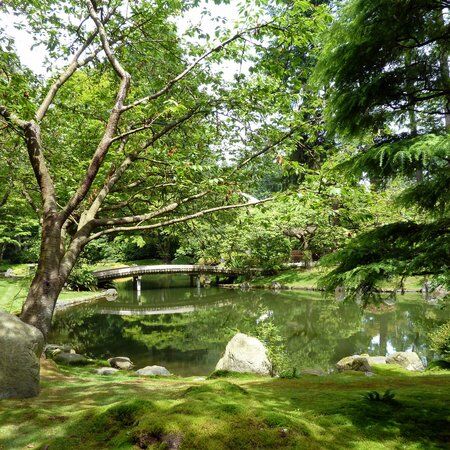
The Essence of Japanese Gardens
Japanese gardens are often seen as more than just landscaped spaces; they are reflections of cultural and philosophical principles. The design of a Japanese garden is deeply influenced by elements such as Shinto beliefs, Zen Buddhism, and traditional practices like the tea ceremony. Each feature of the garden, from the layout of stones to the placement of water features, is carefully considered to create a space that encourages meditation and a connection with nature.
For another Japanese inspired garden, click here: Shofuso Japanese House and Garden | CityDays.
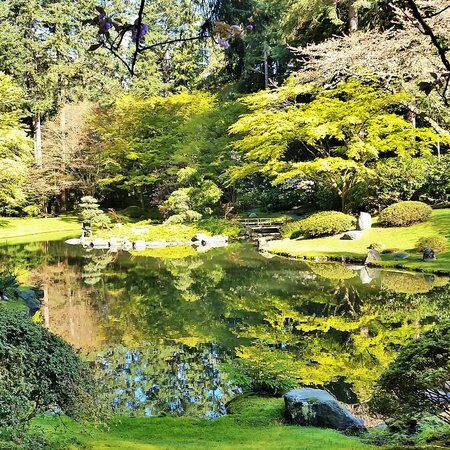
Inside the Nitobe Memorial Garden
At Nitobe Memorial Garden, this philosophy is evident in every corner. The garden’s layout, which includes a central pond, bridges, and carefully pruned plants, invites visitors to explore at a leisurely pace. It also offers a sensory experience, from the sound of water flowing over rocks and the sight of koi swimming gracefully, to the rustle of wind through the trees.
Key Features of the Garden
The Central Pond and Bridges
The garden's centerpiece is a large, irregularly shaped pond, home to colorful koi and crossed by six distinct bridges. Each bridge offers a different perspective of the garden, encouraging visitors to pause and reflect. One of the bridges leads to the Island of Eternity, a turtle-shaped island symbolizing immortality.
Stone Lanterns and Sculptures
Scattered throughout the garden are various stone lanterns, including the inscribed Nitobe Lantern, each with a unique design. These lanterns not only enhance the garden's aesthetic but also symbolize the guiding light that repels darkness.
The Tea House and Roji
A visit to the garden is incomplete without exploring the traditional tea house, Ichibō-an. This tea house hosts the garden’s Japanese tea ceremony, a practice rooted in Zen Buddhism that emphasizes mindfulness and simplicity.
Surrounding the Ichibō-an, the Roji garden, meaning "dewy ground," is designed to prepare visitors mentally as they approach the tea house, helping them leave behind worldly distractions and enter a state of calm.
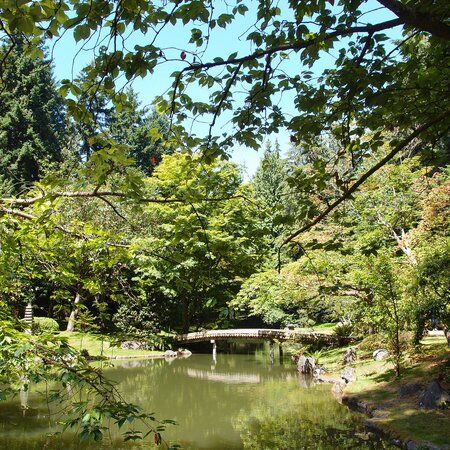
Symbolism in the Garden
Symbolism in the Nitobe Memorial Garden allows visitors to gain a deeper connection to Japanese philosophy and culture. The garden's layout is intended to represent the journey of life, with various paths symbolizing different stages and choices. For example, the garden's two main bridges—the 77-log bridge and the 11-plank bridge—offer different routes across the pond, representing different life paths. Even the placement of rocks and the design of lanterns are imbued with symbolism, encouraging visitors to reflect on their own journeys through life.
Plants and Seasonal Highlights
The garden’s design incorporates elements of traditional Japanese tea and stroll gardens filled with an array of plants, many of which were imported from Japan to maintain the garden's authenticity. These plants alter with the seasons. In spring, cherry blossoms bloom as delicate pink buds across the garden, while summer brings the intense vibrancy of irises. Autumn sees the garden aglow with the fiery reds and golds of maple leaves, and in winter, the carefully pruned trees and shrubs frame the peaceful landscape.
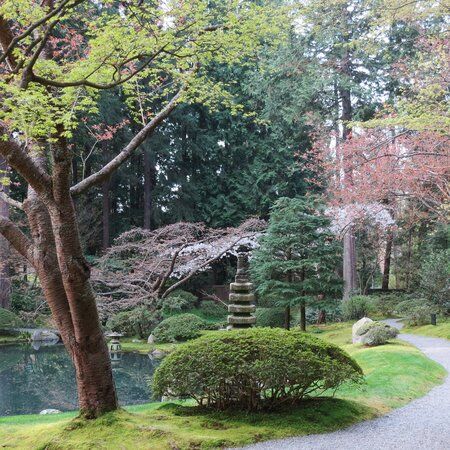
Improvements to the Nitobe Memorial Garden
The Nitobe Memorial Garden is not only a place of beauty but also an important cultural and historical site. The history of the Nitobe Memorial Garden is marked by challenges and resilience. During World War II, the original memorial to Dr. Nitobe, a kasuga-style lantern from Japan, was vandalized amidst the widespread anti-Japanese sentiment of the time. This period also saw the internment of over 20,000 Japanese Canadians, a dark chapter in Canadian history.
It wasn’t until the late 1950s that efforts were made to restore Dr. Nitobe’s memorial. The Japanese Canadian community, alongside the Government of Japan, rallied to create a larger, more enduring garden. Funding for the project came from various sources, including the Japan-Canada Society in Tokyo and local fundraising efforts within the Japanese Canadian community.
The garden was completed in 1960, shortly before Mori’s return to Japan, and stands today as his final masterpiece. In recent years, efforts have been made to have the garden recognized as a national historic site, highlighting its significance in Japanese Canadian heritage.
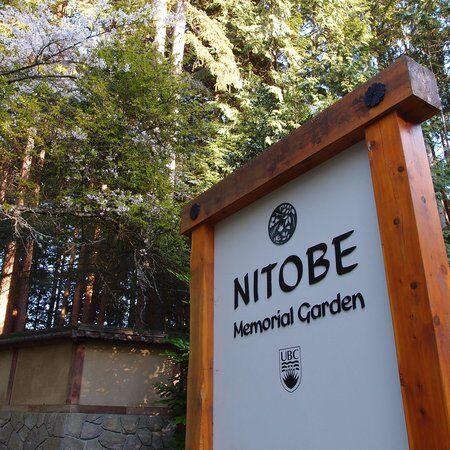
Visiting Nitobe Memorial Garden
The garden is open year-round from Tuesday to Sunday, with extended hours during the spring and summer months. Admission fees are low, and because the memorial garden is located at the University of British Columbia, UBC students can visit for free year-round. Visitors can also purchase combined tickets to explore both the Nitobe Memorial Garden and the UBC Botanical Garden.
The best times to visit Nitobe are during spring and autumn, to witness the beautiful cherry blossoms and fall foliage. But throughout the summer, the Urasenke Foundation of Vancouver hosts traditional tea ceremonies in the garden's tea house. These ceremonies are an opportunity to experience the Way of Tea. Be sure to reserve your spot in advance, as spaces are limited.
To fully appreciate the garden, it's recommended to spend at least 45 minutes exploring its paths and taking in the features. The garden's design encourages slow, mindful exploration, with no signs to direct you, only a self-guided tour leaflet to help you uncover the garden's many layers of meaning.

Explore Beyond the Nitobe Memorial Garden with CityDays
After cleansing your spirit in the peacefulness of Nitobe Memorial Garden, why not continue your exploration of Vancouver with a CityDaysOur scavenger hunt tour, and in particular our Heart of Gas & Gold tour?
The experience is filled with puzzles and challenges, making it perfect for those who love to solve mysteries while exploring. Each stop on the trail is packed with intriguing tales from Vancouver’s history, from the 1858 gold rush to the impacts of two world wars.
For those planning a team-building event, our scavenger hunts are also available as corporate packages, offering a fun and challenging way to strengthen teamwork and communication in one of the world’s most beautiful cities.
Book your spot today and see Vancouver in a whole new light! Not visiting Vancouver this time? Don’t worry, you’ll find us all over the world!
